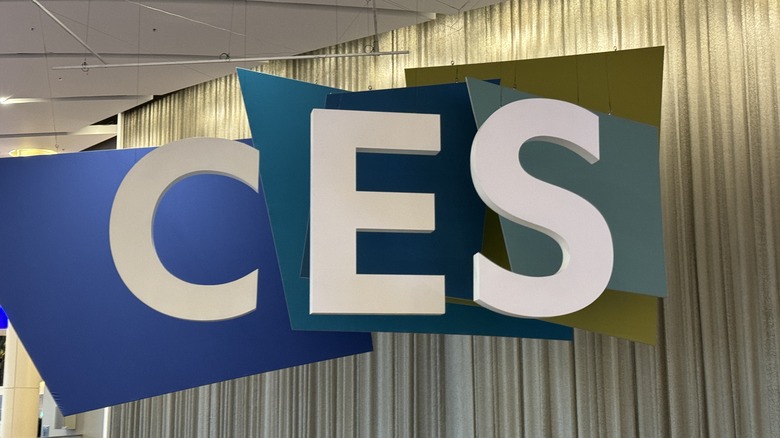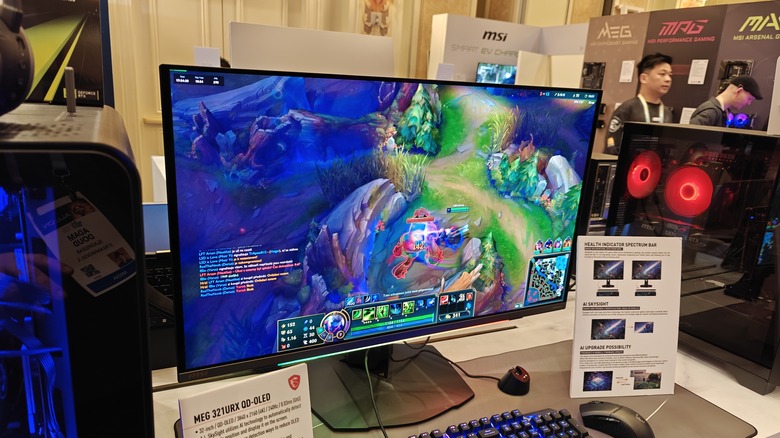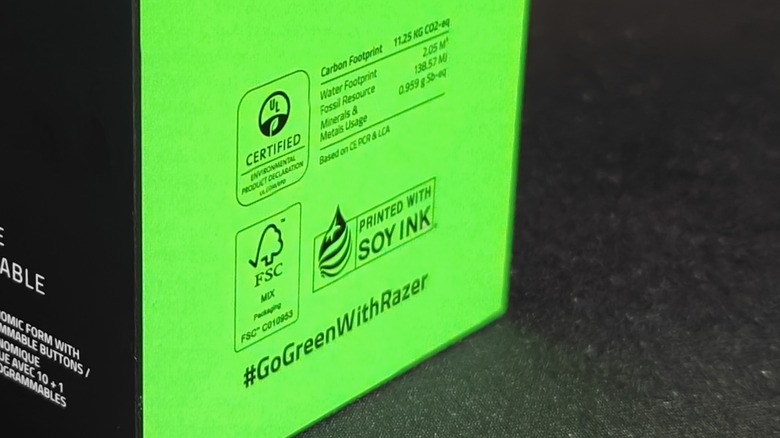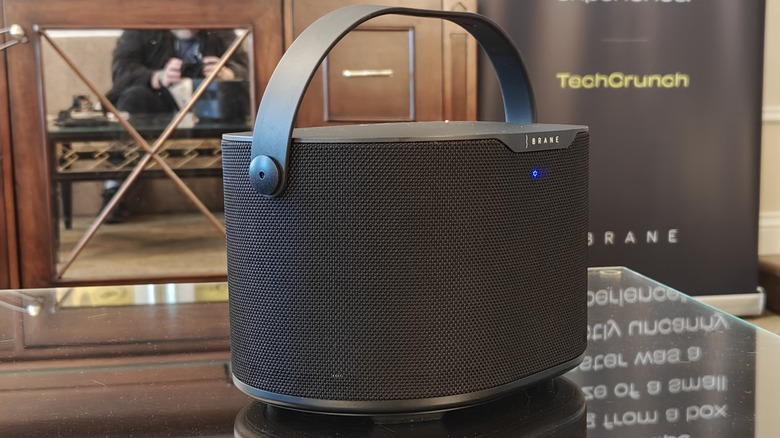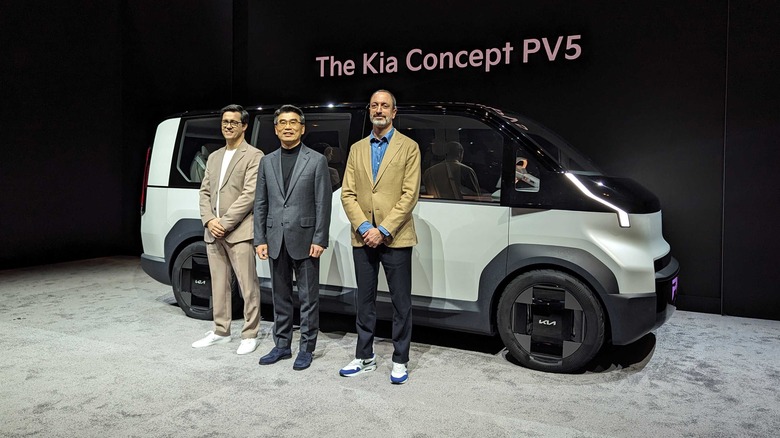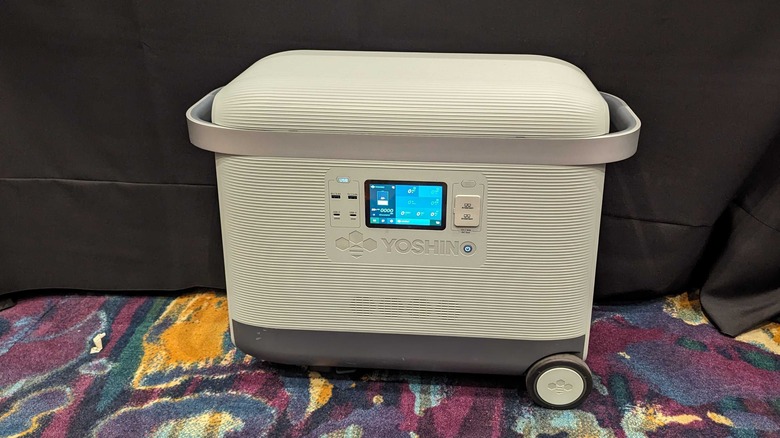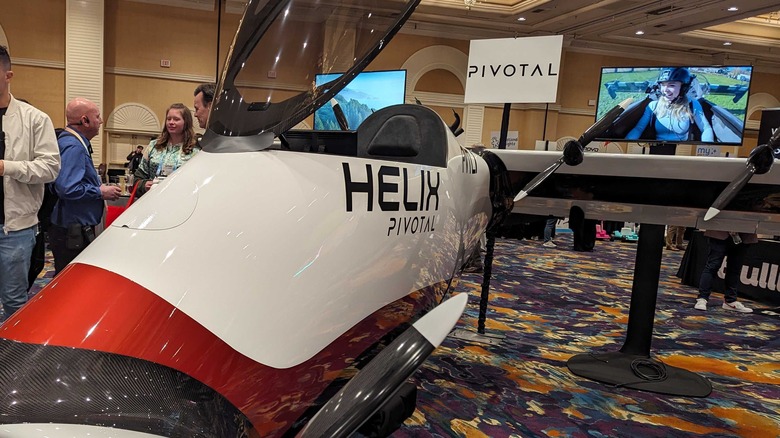The Best Moments Of CES 2024 Day 1: Big Gaming And Booming Sound
The Consumer Electronics Show is one of the biggest showcases for gadget pageantry every year. Brands use the show to announce new products and to showcase products that will launch throughout the year. It's a great way to get a sense of everything to come.
Monday, January 8th, was SlashGear's second full day on the ground. Since the show floor was not yet open, most of our time was spent in individual meetings with brands, including MSI, ASUS, Jlab, and more. Overall, we saw a lot of really cool tech, some of which is appropriately flashy and borderline bombastic, and other tech that may otherwise fly under the radar.
Since we are scouring Sin City for 12+ hours per day, clocking miles on our feet and more ride-share rides than we care to admit, we wanted to give you a look at some of the stuff that caught our eye. From handheld gaming to dual-screen laptops to affordable headphones, here's the coolest tech we saw on day two of CES in Las Vegas.
AI in your monitor
MSI is bringing an assortment of gaming hardware to the table as expected, but one cool product may fly under the radar a bit. This is called the MEG 321URX QD-OLED, and it's an AI-powered monitor with a couple of cool features.
First, each of the monitors, which come in a variety of sizes, has an RGB bar across the bottom of it. This LED bar not only adds a little style to your monitor, as gamers tend to enjoy, but it also has a useful feature built into it via a Software Development Kit (SDK). Game developers can integrate this SDK so that as your health in the game decreases, the LED bar gets appropriately shorter. At a glance, you can tell how much life you have left without having to zero in on a specific area of the screen.
The AI can also be trained to help you locate enemies on a battlefield. When you're playing an explorer game like "League of Legends," the AI will show an icon on the screen and point in the direction of your nearest enemy. MSI pointed out that this AI can be trained with multiple games, like "Forza," without any developer involvement. Over time, the AI will learn what information is useful to the gamer and notify you appropriately.
A nutrition label for your tech
Razer is one of the more well-known gaming hardware companies and, as such, it introduced a trio of new Blade laptops, a light bar that enhances your gaming experience, and a concept haptic chair addition that developers can use to enhance gaming sound with vibrations to really draw you into the game. But there were two other interesting ideas.
The first is a new version of its gaming chair, the Iskur V2. This is a wonderfully comfortable gaming chair that is adjustable in just about any way you can imagine. You can position your body however is most comfortable, from leaning forward during those intense gaming sessions to reclining back for a quick nap while you wait for your partners to ready up in "Fortnite." The chair also includes an adjustable lumbar that you can set in height and protrusion and seems to follow you from side to side if you lean one way or the other. It's really neat.
Also, starting in 2024, Razer is bringing its sustainability metrics to the sides of its packaging. You'll be able to see what Razer is calling the EPD or Environmental Product Decoration, which is a sort of "nutritional label" that will show a consumer how many resources were used in the production of the product, including water, mineral, and fossil resources (read: plastics) utilized. Further, Razer hopes to encourage other manufacturers to start publishing the same statistics as it pushes toward environmental responsibility.
Portable booming sound
One of the more impressive demos from CES comes from a company called Brane Audio, which is introducing a new portable speaker (called Brane X) with a built-in subwoofer. On the surface, that doesn't seem like a really big deal — you've probably heard decent bass from a portable speaker before, but it's important to understand that you have not.
Subwoofers are, by their very nature, typically large, and that's because of the physics that goes into them. Subwoofers need to push a lot of air to achieve the low frequencies that they produce. Other portable speakers you can buy either don't hit the kinds of low frequencies the Brane can, or they're huge and require wheels to move around.
The Brane X is not small, but it's also not terribly large. It's about the size of a standard subwoofer that you would find on most speaker sets, but what sets the Brane X apart is that within that same footprint, it also holds speakers for the midrange and high end, and by the way, it also packs a 12-hour battery. The sound coming from this speaker is downright shocking. It makes competing speakers seem hollow. It's really remarkable what the Brane X can accomplish in such a small form factor.
Kia's odd concept car
Kia's big announcement at this year's CES is an automotive platform that seemingly acts like a big LEGO set. As well as working seamlessly together, the interiors and exteriors of the vehicle can seemingly be switched. SO a delivery van can become a bakery, a library, or a house. The shelves inside can also become things outside, like benches, stalls, and picnic tables.
All concepts go a little overboard, but Kia's 2024 effort pushes it to the limit. Unfortunately, like most concepts, we're unlikely to see Kia's PVBs transition into reality. We'll undoubtedly get a range of similar-looking vehicles, which may even be highly customizable from the factory. Kia is also likely to have highly advanced self-driving tech at some point in the future as parent company Hyundai has a solid research and development department. Large businesses may even get some elements of the integration and modularisation features. But don't expect to eat dinner in the back of a moving PV5 before turning it into a pickup truck for your landscaping job. That's just silly.
Yoshino's batteries
The future of batteries is solid state. They have twice the energy density of things like Lithium Ion, so you can have twice the capacity at a similar size and weight or something just as energy-dense but half the size. This will greatly impact everything from EVs to home energy storage to cell phones. But if you can't quite wait, one company allows you to experience a bit of the future now. Yoshino has a range of solid-state portable power stations, with more to be added this year.
Like most cutting-edge tech, it isn't cheap, with its B4000 retailing at just under $3,300, but you get a lot of bang for your buck. This is the only solid-state personal power solution on the market at the moment, so you won't get anything as light and power-dense as this. The format is also far more durable than traditional battery tech, so it may be worthwhile in the long run.
Flying for dummies
Ever wished you could fly but realized you have no pilot's license and no idea what you're doing? You still can — provided you have $190,000 of fun money. The Pivotal Helix is an ultralight aircraft packed with enough flying aids to stop you from falling out of the sky. It also doesn't require any sort of license to operate — though Pivotal will provide training when you buy one. The training is also included in the vehicle's cost, making it even more of a bargain.
The Helix is battery-powered and can spend around 20 minutes in the air when fully charged. It lands and takes off vertically, which is perfect if your back garden doesn't have a runway. Said take-off and landing are also automatic, removing an opportunity for some catastrophic piloting errors. When you're in the air, the software will kick in if you're pitching or banking too much. A warning will also sound when you're past the point of having enough battery to get back. If you still manage to mess up somehow, a parachute will deploy, and it can land on water if necessary. It's also cheaper than a McLaren Artura, so it should be a strong contender for anyone with six-figure fun money.
